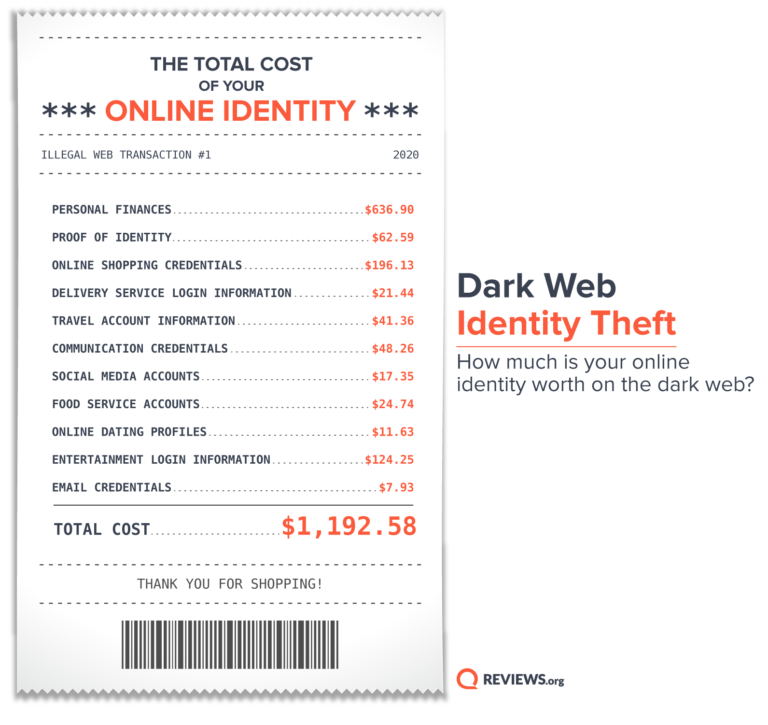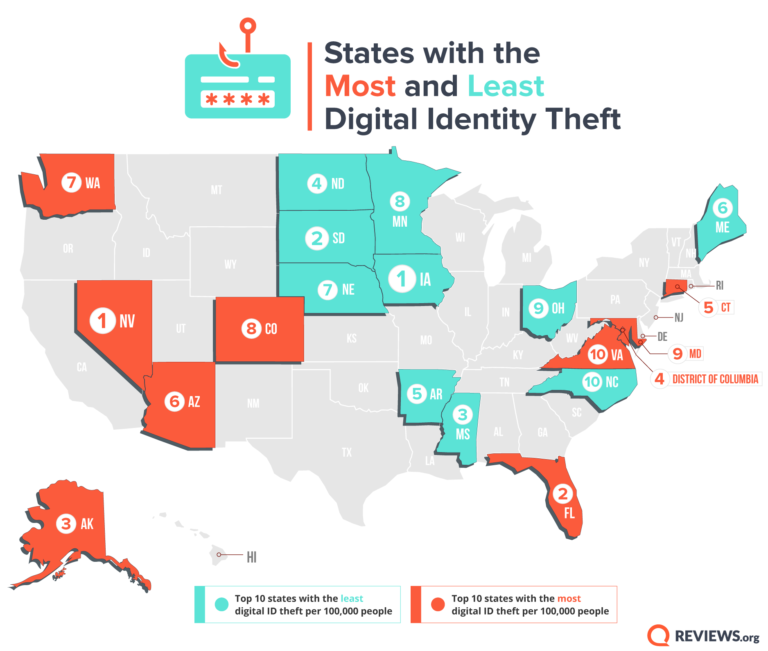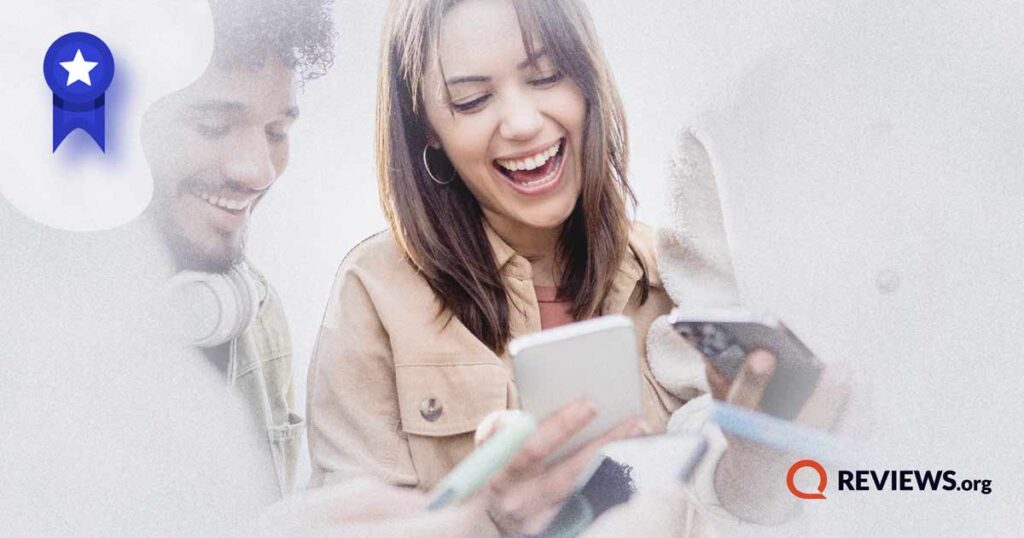Unless you’ve just come to the future from the 1980s, you know that identity theft is a severe problem. But you might be unsure how your private information would make its way into the hands of an identity thief.
Identity Theft Report: The Cost of Your Identity on the Dark Web
Identities are stolen in numerous ways, but one big way is through database breaches. Hackers pull identities, credit card numbers, and more from databases. But they don’t use it all themselves; oh no. Instead, they sell the data to the highest bidders on the internet’s version of the black market: the dark web.
The cost of your identity on the dark web

This graphic shows just how much it would cost to pinch your identity from the dark web: $1,192.58. Surprisingly low, unfortunately.
To immediately view more detailed data that’s broken down by category, hop down to the bottom of this piece. Otherwise, keep reading. You’ll get there eventually.
Interesting findings
In the data, the following things stood out to us:
- Bank account details cost a fraction of their actual worth. While the median US household has an account balance of $4,500, bank details on the dark web cost an average of $259.56.1
- Your AOL account, if you still have one, ain’t worth much: less than 50 cents. Not even identity thieves want it.
- Why replace your passport for $110.00 when you can buy a new one on the dark web for about $18.45? Oh, right—because it’s illegal.
- Amazon accounts are highly coveted. Amazon’s got 103 million Prime subscribers, so these accounts aren’t exactly rare. Yet Amazon login information sells for $30.36. That’s more than it costs to buy someone’s driver’s license.
- Netflix information sells for $10.73. That’s less than paying for streaming for a whole month.
Some of these prices make a lot of sense to us. We get why debit card info costs more than credit card info. When you drain a debit card, that money is yours for keeps, while credit card charges can be denied or disputed. And it makes sense to charge top dollar for an Amazon account; you can buy almost anything from Amazon.
But why does bank account information (which presumably contains both credit and debit card details plus access to savings) cost only slightly more than debit card information? Why does a Facebook login cost more than a Grubhub login? Who decided that a McDonald’s account has the same value as a Match account?
We find these prices endlessly fascinating—and scary. Someone can get on the dark web and say, “Hmm, yes, I have $6. What do I feel like today? Taking over an ESPN subscription, impersonating someone on Reddit, or hijacking a Gmail account?” It’s the value menu from hell.
If your username-password combos are the same across every service you use, when someone buys one piece of your login information, they’re buying it all. Use discrete usernames and passwords for your accounts to avoid this nightmare.
Identity theft in your state
Are you freaked out? Don’t get too alarmed yet. Identity theft is linked to location. Depending on where you live, you might have a lower (or higher) chance of someone stealing your identity.

With crime data, we’ve often noticed regional or population-based patterns that cause one state to have more crimes than another. But identity theft likelihood is a bit scattered. While certain states are at higher risk than others, there doesn’t seem to be a countrywide region- or population-based pattern.
Out in the Wild West, Nevada’s the 32nd most populous US state/territory, yet it has the highest reports of identity theft and personal data breaches.2 Southern state Florida has the third-highest population and the second-highest identity theft likelihood. And remote Alaska, which comes in at 49th for population, takes the third spot.
On the other end of things, Iowa has the fewest reported incidents of identity theft and personal data breaches. Yet the Hawkeye State is right above Nevada in terms of population.
Protecting yourself
No matter what you do, you can’t 100% protect yourself against identity theft. The truth is that when people set out to hurt others, sometimes you just can’t stop them. But you can pivot and respond to identity theft before it escalates.
One way to do that: sign up for an identity theft protection service. An identity theft protection service monitors your credit reports and bank accounts. If suspicious activity occurs, you’ll be alerted right away so that you can take immediate steps.
You can also reduce the chances of identity theft by using a VPN when browsing. A virtual private network conceals your identity and internet service provider while encrypting your internet connection. (And it’s not just for business or online shopping; there are VPNs with features for gamers or smart TV users.) When you’re shielded by your VPN, would-be hackers will pass you over in favor of more vulnerable targets.
We especially recommend using a VPN when connecting to a public network, like the free Wi-Fi at a McDonald’s or Starbucks.
Whatever you choose to do, keep an eye out for potential identity theft. If you’re diligent, you’re less likely to find your identity for sale on the dark web.
The cost of your identity by category
If you’re wondering the price for individual pieces of your identity, look no further. We’ve broken them down for you by category.
We don’t know of data for Social Security numbers specifically, but we think SSNs would fall under “other proof of identity.”
Methodology
To create this piece, we used data from the FBI and Top 10 VPN.
Each state was ranked based on the following factors, with a lower value positively impacting the final score:
- Identity theft cases per 100k population (50%)
- Personal data breach cases per 100k population (50%)
Each measurement was normalized on a 0–1 scale. A one corresponds to the measurement that would most positively affect the final score, and a zero corresponds to the measurement that would most negatively affect the final score. We then added the adjusted measurements together with the weights mentioned above to get a score of out of 100.
Sources
Related Articles



